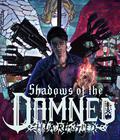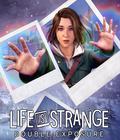Of Orcs and Men was an RPG that had protagonists who were markedly different from what's expected in the genre. The result was mixed, with some critics and players adoring the idea while others didn't enjoy the gameplay mechanics. From there, Cyanide decided to do a prequel that revolved around the goblin Styx but shifted genres from RPG to stealth. Compared to the first game, Styx: Master of Shadows was a better received title. Instead of branching out, Cyanide decided to stick with Styx: Shards of Darkness, a sequel that does exactly what you'd expect.
Once more, you play as Styx, an unusually intelligent goblin who has a gift for stealth and thievery but not much else. The title takes place a few years after the events of the last game, and Styx is out on a normal gig pilfering the pay for the guards of the area when he gets ambushed by C.A.R.N.A.G.E., an official group of the government dedicated to the eradication of goblins. Instead of certain doom, the captain of the group proposes a deal for the thief: a large supply of amber in exchange for a staff and quartz, which a priestess is using to gain immortality. Though Styx takes on the job, he intends to take the amber and quartz for himself.
The story is fine but familiar, and it offers little to no surprises. The characters, however, don't do this part of the game any favors, as almost all of them are rather forgettable, making them ciphers for moving the story along instead of something more important. Styx is the only one with any real personality, and even that isn't universally loved. Some will love his crass nature and his constant breaking of the fourth wall, especially when you meet your demise. Others will hate that same personality and dislike that some jokes and references are overused in media.
Those familiar with the first game will find Shards of Darkness to be roughly the same. To everyone else, the gameplay is very similar to most stealth games on the market. Styx can cling to walls, hide in shadows, and grab onto ledges to shimmy to more stable ground. Climbing is restricted to certain footholds, but any other flat ledge is fair game. Aside from being able to balance on thin ledges and climbing and swinging on ropes, Styx has a few powers related to his use of amber. This includes complete invisibility and the chance to make a controllable clone.
Styx can also do a few things that you don't normally see in other stealth games. With some sand at your disposal, you can extinguish torches from a distance. There are lots of ingredients you can find in the field, and a workbench gives you the chance to make a number of items, including health potions and bolts to take out enemies from afar. The bench also happens to be in your hideout, where you can also use any stealth points to upgrade your stealth and amber-related abilities.
His weakness lies in his fragility and lack of combat abilities. Styx can kill by sneaking up behind enemies, and he now has the ability to do so from a short distance or from behind boxes. As mentioned earlier, he can craft bolts to kill enemies, though your small cache means that you'll only rely on this on very rare occasions. When coming face-to-face with any enemy, his offensive capabilities are gone. He can parry most sword swings, but that feature isn't available if you play at higher difficulty levels. With only enough strength to take on one or two strikes at best, your only option when discovered is to run and hope that you can lose your pursuers. Otherwise, you'll find that even the prologue stage is difficult, since enemies can easily skewer you.
That one change to the standard formula makes this a stealth game where staying concealed is your truest path to victory, especially if you tackle the higher difficulty levels. The good news is that the level design is open to you taking any approach in tackling your goal, so even in the more restrictive stages, you won't be confined to one victory path. The verticality of the stages and the open design allow you to indulge in acrobatics, and the cleaner HUD design lets you see more without mini-maps. However, that level appreciation starts to diminish in the second half of the game, when you start to notice that you're revisiting the same stages, only with different objectives.
There are some other design decisions that seem to counter your skills. You can extinguish torches, but those are often placed in areas where lanterns are present, and those can't be snuffed out. The poisoning of food and drink is a good idea, but you'll rarely see enemies having a light snack. The same goes for the booby trap system, where you can sabotage alarms or squash guards with chandeliers but rarely find that enemies go for them. The quick save option is nice to have, but if you don't take advantage of it, you'll rely on the automatic save system. That seems fine until you realize that there's no rhyme or reason to the checkpoint system. Sometimes it'll save when you capture a quest-specific item or complete something big, but defeating bosses doesn't seem to count, so dying can mean having to fight that boss again.
Graphically, Shards of Darkness has gotten some improvements from using Unreal Engine 4. Character models are very well detailed and slightly larger than before, while the animations are fluid. Particle effects aren't abundant, but they're well done, with everything from torches to shiny puke looking quite nice. The frame rate is stable, and the load times are quick between deaths, so constant failure doesn't carry a hefty punishment. The one noticeable flaw is when the camera pans within buildings, as the edges of the screen have a habit of briefly cutting off the world before letting the correct geometry come into view. This is especially noticeable in dark areas, as you'll see the edges go white before quickly transforming to a darker shade.
The sound is in a much more solid state. The music is perfect, as it sets up a dreary mood with a low-key orchestral soundtrack. Unlike other stealth games, it is constantly playing, so you aren't left in silence, but it accentuates the gameplay instead of interfering with it. The effects are fine, while the voicework is very well done. Even if some of the jokes miss, the lines and dialogue are done by a cast that sounds perfect for the roles.
In the end, Styx: Shards of Darkness is a solid stealth title. The lack of real combat puts your ability to go undetected to the test, and the breadth of each level means that your solutions to each problem are wide open, giving you some flexibility to your approach. While your abilities are fun to use, it would've been nice to see them make a difference, especially since the game reuses some environments instead of going for new ones. Shards of Darkness is an improvement over the first game, and it's worth checking out if you're a stealth fan.
Score: 7.5/10
More articles about Styx: Shards of Darkness










 The centuries-old goblin assassin Styx returns in a new stealth game, Styx: Shards of Darkness, with a bigger budget, bigger ideas, and a new engine: Unreal Engine 4.
The centuries-old goblin assassin Styx returns in a new stealth game, Styx: Shards of Darkness, with a bigger budget, bigger ideas, and a new engine: Unreal Engine 4.









